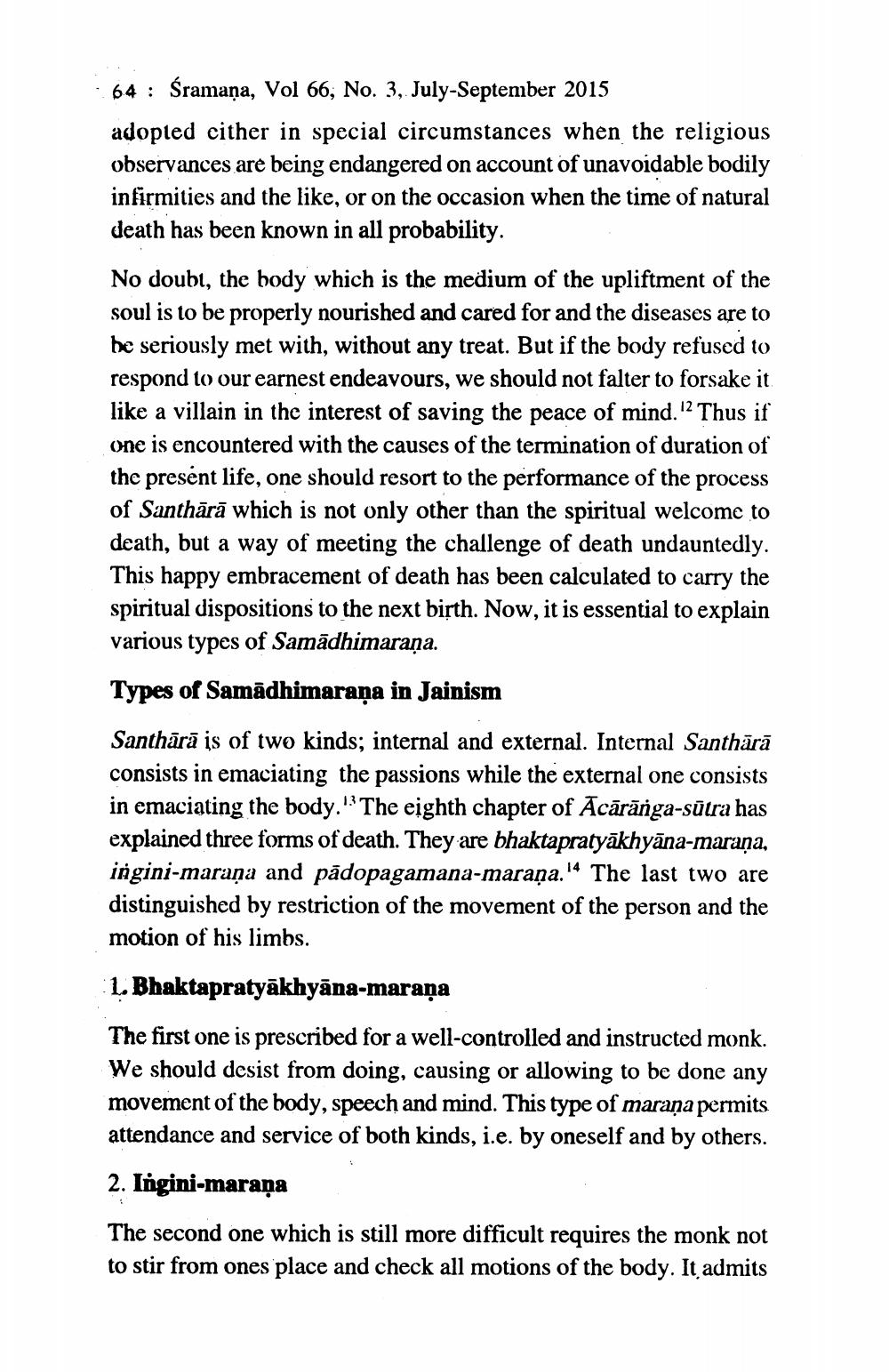________________
64 : Śramaņa, Vol 66; No. 3, July-September 2015 adopted cither in special circumstances when the religious observances are being endangered on account of unavoidable bodily infirmities and the like, or on the occasion when the time of natural death has been known in all probability. No doubt, the body which is the medium of the upliftment of the soul is to be properly nourished and cared for and the diseases are to he seriously met with, without any treat. But if the body refused to respond to our earnest endeavours, we should not falter to forsake it like a villain in the interest of saving the peace of mind. 2 Thus if one is encountered with the causes of the termination of duration of the present life, one should resort to the performance of the process of Santhārā which is not only other than the spiritual welcome to death, but a way of meeting the challenge of death undauntedly. This happy embracement of death has been calculated to carry the spiritual dispositions to the next birth. Now, it is essential to explain various types of Samādhimaraṇa. Types of Samādhimaraṇa in Jainism
Santhārā is of two kinds; internal and external. Internal Santhārā consists in emaciating the passions while the external one consists in emaciating the body." The eighth chapter of Ācārānga-sūtra has explained three forms of death. They are bhaktapratyākhyāna-marana, ingini-maraṇa and pādopagamana-maraņa." The last two are distinguished by restriction of the movement of the person and the motion of his limbs. 1. Bhaktapratyākhyāna-maraņa The first one is prescribed for a well-controlled and instructed monk. We should desist from doing, causing or allowing to be done any movement of the body, speech and mind. This type of maraņa permits attendance and service of both kinds, i.e. by oneself and by others. 2. Ingini-maraña The second one which is still more difficult requires the monk not to stir from ones place and check all motions of the body. It admits




